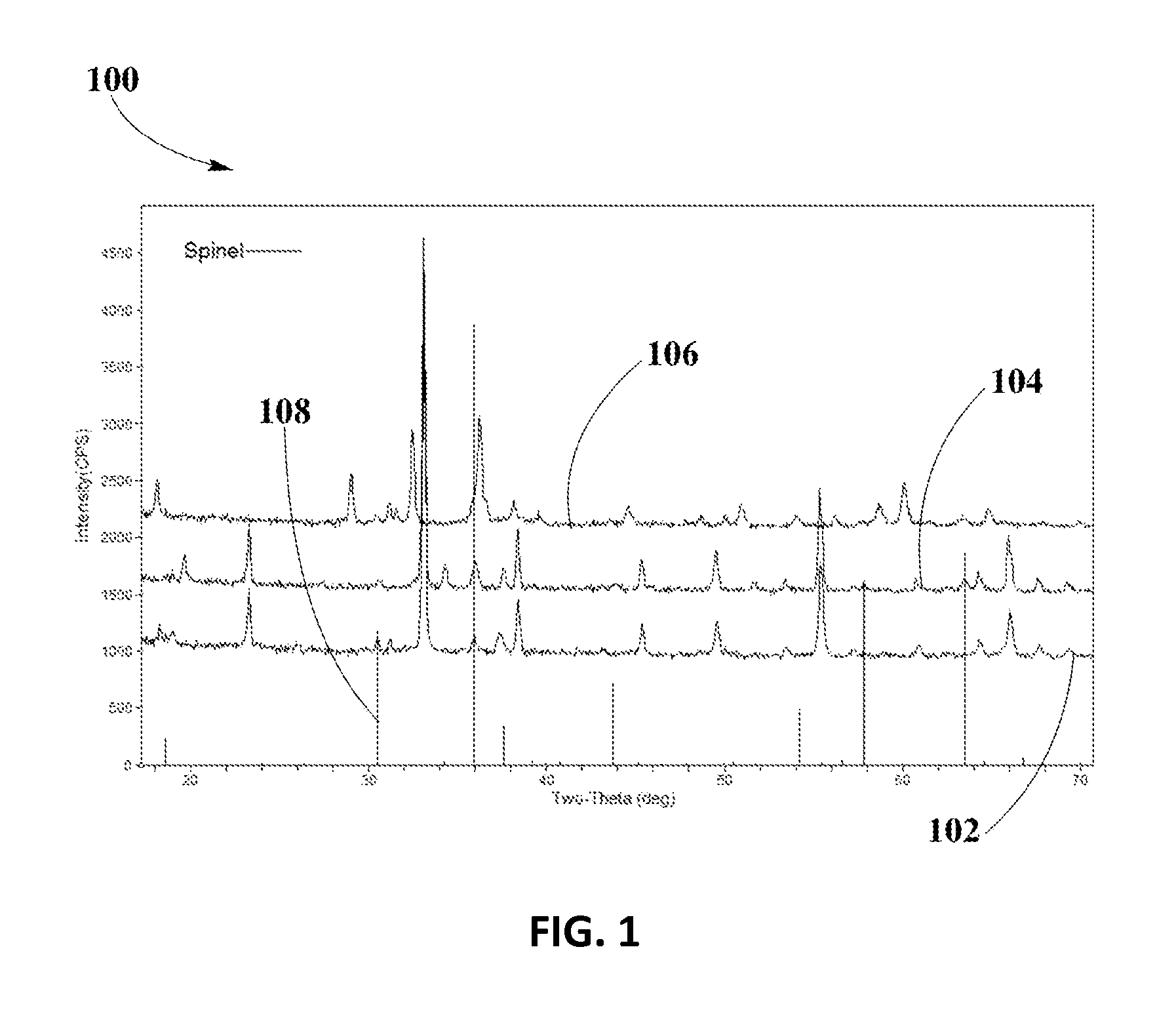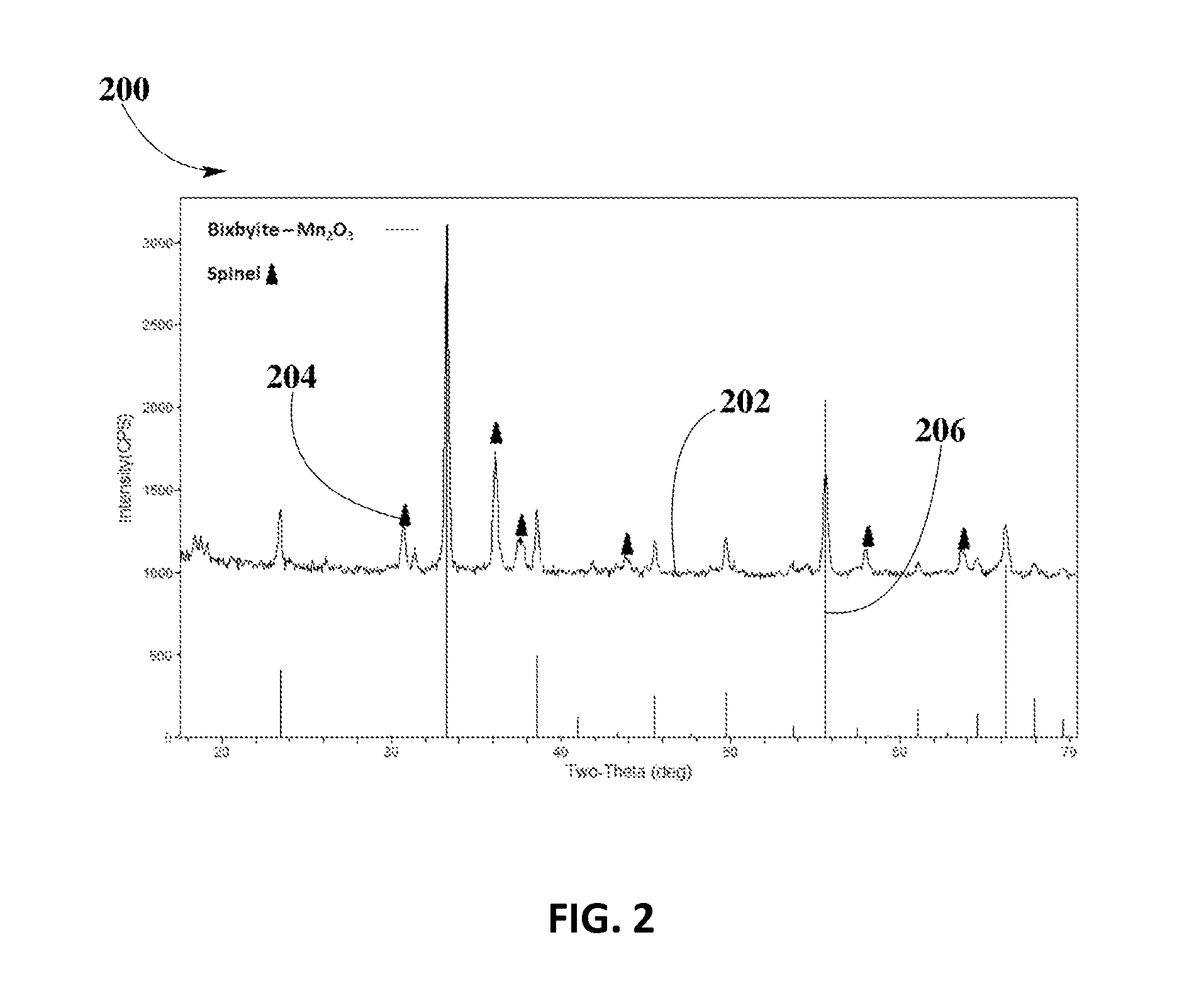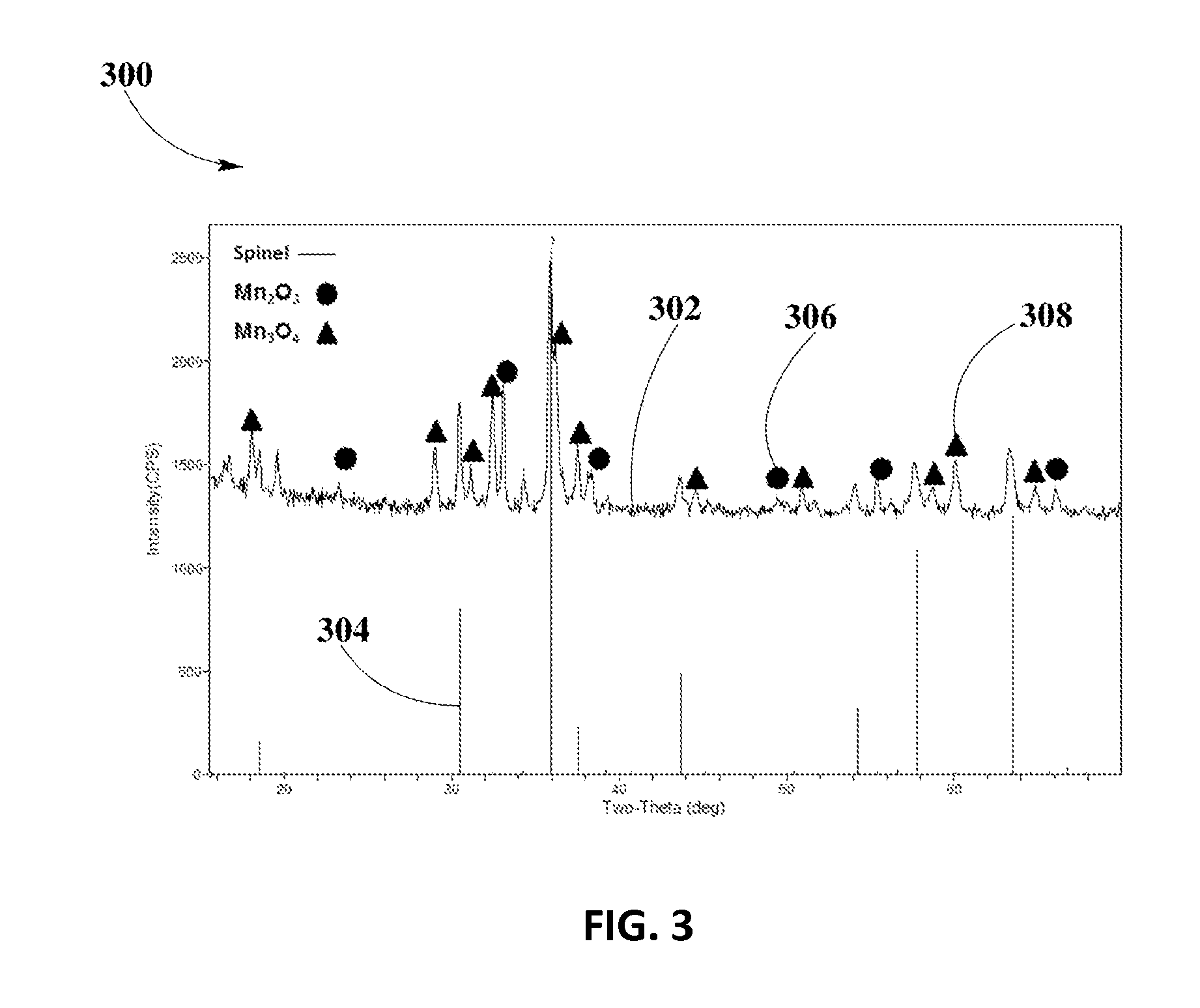Formation and Stability of Cu-Mn Spinel Phase for ZPGM Catalyst Systems
a catalyst system and spinel phase technology, applied in the field of catalyst systems, can solve the problems of reducing the effective surface area, increasing the cost, and gradual degradation of the catalytic function, and achieve the effect of optimal spinel phase formation and phase stability properties
- Summary
- Abstract
- Description
- Claims
- Application Information
AI Technical Summary
Benefits of technology
Problems solved by technology
Method used
Image
Examples
example # 1
Example #1
Cu0.2Mn2.8O4 Bulk Powder
[0047]Cu—Mn solution may be prepared by mixing the appropriate amount of Mn nitrate solution (MnNO3) and Cu nitrate solution (CuNO3), with water to make solution at specific molar ratio according to formulation CuxMn3-xO4, in which X may take values of 0.2. For preparation of Cu0.2Mn2.8O4 bulk powder, after precipitation of Cu—Mn solution with appropriate base solution, the slurry may undergo filtering and washing followed by drying calcination at a plurality of temperatures of about 700° C., 900° C., and 1,100° C. for about 5 hours. The prepared powder at different calcination temperatures may be subsequently ground to fine grain to form bulk powder.
[0048]FIG. 1 shows XRD analysis 100 for spinel phase formation and spinel phase stability of Cu0.2Mn2.8O4 spinel in example #1, at different firing temperatures, according to an embodiment. XRD spectrum 102 shows Cu0.2Mn2.8O4 spinel calcined at temperature of about 700° C., XRD spectrum 104 shows Cu0.2M...
example # 2
Example #2
Cu0.5Mn2.5O4 Bulk Powder
[0051]Cu—Mn solution may be prepared by mixing the appropriate amount of Mn nitrate solution (MnNO3) and Cu nitrate solution (CuNO3), with water to make solution at specific molar ratio according to formulation CuxMn3-xO4, in which X may take values of 0.5. For preparation of Cu0.5Mn2.5O4 bulk powder, after precipitation of Cu—Mn solution with appropriate base solution, the slurry may undergo filtering and washing followed by drying calcination at a plurality of temperatures of about 600° C., 800° C., 900° C., 1000° C. and 1,100° C. for about 5 hours. The prepared powder at different calcination temperatures may be subsequently ground to fine grain to form bulk powder.
[0052]FIG. 2 depicts XRD analysis 200 for spinel phase formation of Cu0.5Mn2.5O4 spinel in example #2, fired at about 600° C., according to an embodiment.
[0053]XRD spectrum 202 shows that Cu—Mn spinel forms in sample of Cu0.5Mn2.5O4 calcined at about 600° C. Solid triangle markers 204 ...
example # 3
Example #3
Cu1.0Mn2.0O4 bulk powder
[0061]Cu—Mn solution may be prepared by mixing the appropriate amount of Mn nitrate solution (MnNO3) and Cu nitrate solution (CuNO3), with water to make solution at specific molar ratio according to formulation CuxMn3-xO4, in which X may take values of 1.0. For preparation of Cu1.0Mn2.0O4 bulk powder, after precipitation of Cu—Mn solution with appropriate base solution, the slurry may undergo filtering and washing followed by drying calcination at a plurality of temperatures of about 600° C., 800° C., 900° C., 1,000° C. and 1,100° C. for about 5 hours. The prepared powder at different calcination temperatures may be subsequently ground to fine grain to form bulk powder.
[0062]FIG. 6 shows XRD analysis 600 for spinel phase formation of Cu1.0Mn2.0O4 spinel in example #3, calcined at about 600° C., according to an embodiment.
[0063]XRD spectrum 602 shows that stable Cu—Mn spinel phase forms in sample of Cu1.0Mn2.0O4 calcined at about 600° C. Solid lines ...
PUM
| Property | Measurement | Unit |
|---|---|---|
| temperatures | aaaaa | aaaaa |
| temperatures | aaaaa | aaaaa |
| voltage | aaaaa | aaaaa |
Abstract
Description
Claims
Application Information
 Login to View More
Login to View More - R&D
- Intellectual Property
- Life Sciences
- Materials
- Tech Scout
- Unparalleled Data Quality
- Higher Quality Content
- 60% Fewer Hallucinations
Browse by: Latest US Patents, China's latest patents, Technical Efficacy Thesaurus, Application Domain, Technology Topic, Popular Technical Reports.
© 2025 PatSnap. All rights reserved.Legal|Privacy policy|Modern Slavery Act Transparency Statement|Sitemap|About US| Contact US: help@patsnap.com



